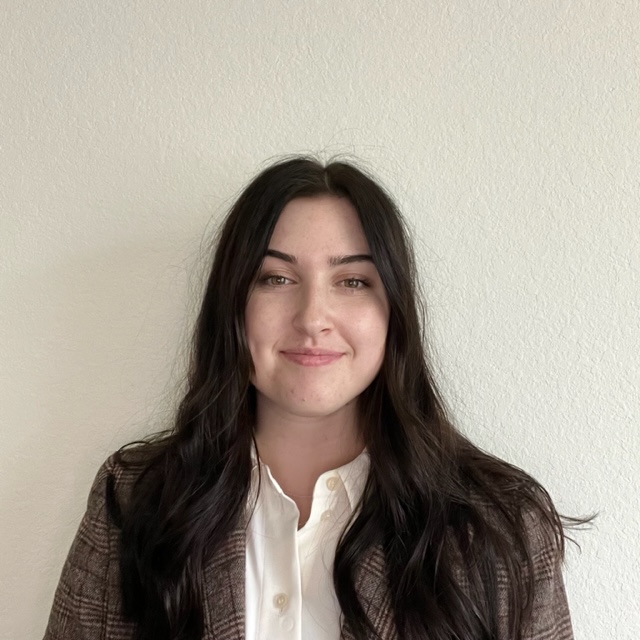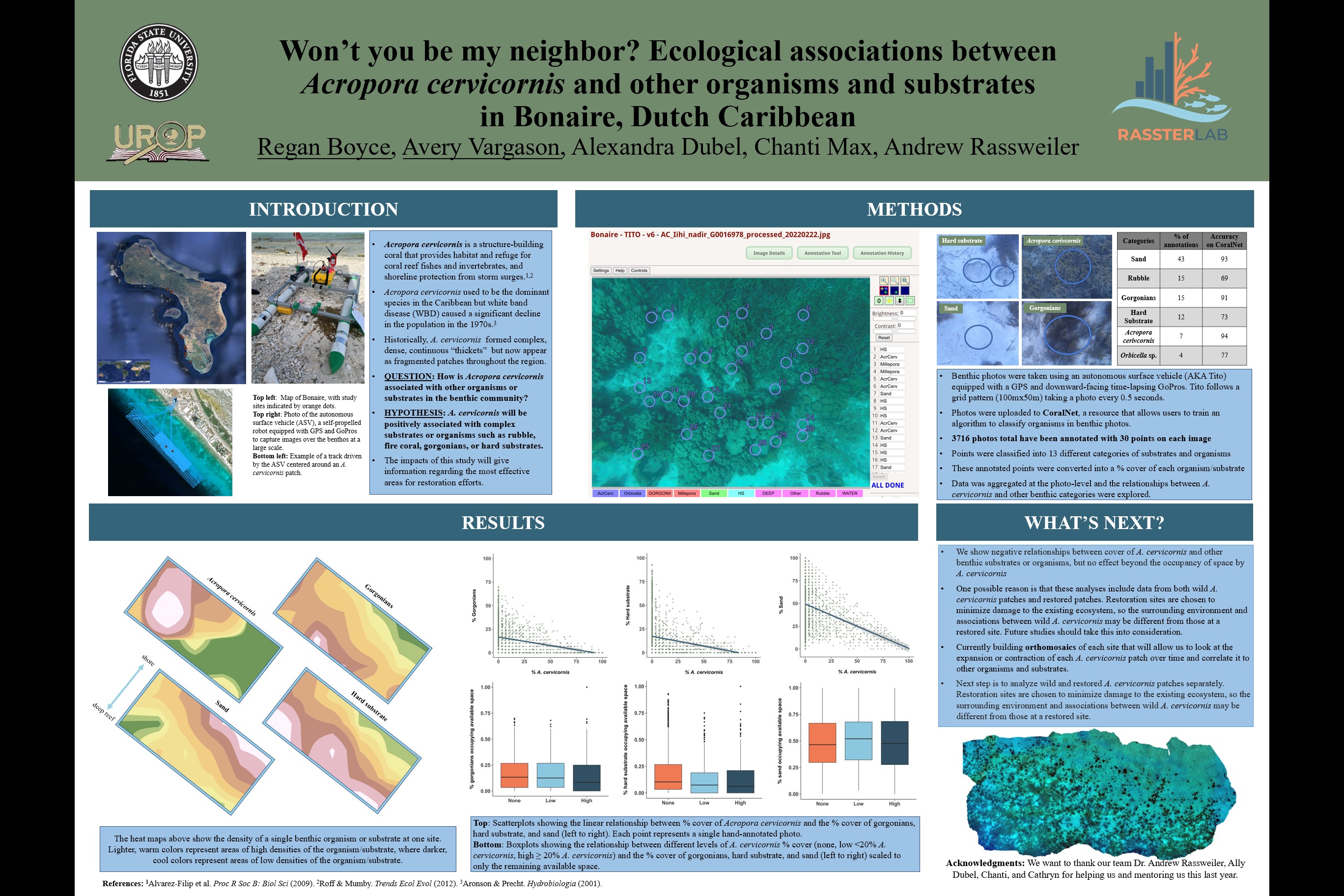Research Symposium
23rd annual Undergraduate Research Symposium, April 6, 2023
Regan Boyce Poster Session 1: 11:00 am - 12:00 pm/ Poster #372

BIO
Hi! My name is Regan and I am a senior in the biological science major. I have an interest in conservation, and my career goal is to be an environmental lawyer working with an NGO. I am originally from Panama City, Florida, and I love going to the beach!
Won’t you be my neighbor? Ecological associations between Acropora cervicornis and other organisms and substrates in Bonaire, Dutch Caribbean
Authors: Regan Boyce , Andrew RassweilerStudent Major: Biological science
Mentor: Andrew Rassweiler
Mentor's Department: Department of Biological Science Mentor's College: College of Arts and Sciences Co-Presenters: Avery Vargason
Abstract
Acropora cervicornis (staghorn coral) used to be a dominant coral species, but in the last few decades has suffered a devastating population decline. Currently, the species is listed as endangered; because of this, several organizations have undertaken efforts to restore this coral. Staghorn is a fast-growing coral that primarily reproduces via fragmentation, making it ideal for restoration. Research has been done on how to restore this coral, but much less has focused on where to restore this coral. Little is understood about how staghorn coral interacts with the benthic community, and whether certain substrates or organisms facilitate or hinder the growth of this species. We collected thousands of benthic photographs in Bonaire, Dutch Caribbean using novel AI technology to cover large spatial areas that included staghorn patches and its surrounding community. Using machine learning technology, we classified the organisms in these photos, calculated the percent cover of different organisms and substrates, and correlated them to the percent cover of staghorn coral. We found no significant relationship between the presence of any other benthic organism (e.g., gorgonians) or substrates (e.g., sand, rubble) and the presence of staghorn coral. This could be attributed to the study including both wild and restored staghorn patches. Dynamics could be different in these patches, so further studies should focus on examining these differences. By acquiring a better understanding of the community structure and substrates that best facilitate staghorn growth, organizations could maximize the success of their restoration efforts.
Keywords: Acropora cervicornis, endangered species, Caribbean, benthic community
Keywords: coral, Caribbean, endangered


